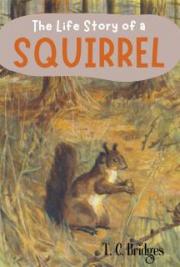SHAMEFUL ATROCITIES
A very tragic and horrible chapter in North American history was the predicament of the American bison also called the American Buffalo or the Plains bison (Bison bison), a North American animal that once inhabited and trekked the grasslands of North America in enormous herds. Their populations extended into Great Bear Lake in the Northwest Territories extending as far South as Mexico and east to the Atlantic coast of the United States from New York as far south as Georgia, and according to some experts extending into Florida.
Bison have long, brushy, chocolate-brown winter coat, and a thinner, fairer brown summer coat. Males are slightly larger than females and occasionally markedly heavier. The plains bison are usually smaller than the Wood bison (B. b. athabascae). Bison can attain a length of up to 11.5 ft. (3.5 m), tail length can reach up to 35.4 in. (90 cm), and weight ranges between 705 lbs., to 2,205 lbs. (320 - 2,205 kg.). When Bison are raised and fattened for slaughter their weight can reach an anomalous level. Bison are herbivores, primarily eating grasses and sedges (Any rush like or grass-like plant of the genus Carex, growing in wet places; definition obtained from dictionary.com).
Their natural inclination is to roam long distances, eating as they travel. Females or cows lead family bands. Bulls live solitary lives or in small bands the greater part of the year, but rejoin the major band during mating season. Their fur coat gives them extraordinary protection from snow, ice, and the cold, wherein it is common for snow to cover their backs without melting.
The American bison was a very important lifeline for many Native American peoples. In particular, those living in the American plains (Note: I will use the designation Native Americans and Plains Indians interchangeably, however, when I am specifically referring to the natives of the Plains I will call them Plains Indians; the mixed up labels are not my fault, they were around long before I was even born, sorry). During the period when these marvellous animals were present in large herds the Plains Indians were able to successfully endure and remain sovereign, not needing any handouts or protection from outside forces. The American bison were nothing short of a miracle from GOD. Native Americans had an essential relationship with the bison, granting them honour and respect for the many good things they brought forth. This relationship lasted for thousands of years until it was unceremoniously, destroyed.
“The creation stories of where buffalo came from put them in a very spiritual place among many tribes ... The buffalo crossed many different areas and functions, and it was utilized in many ways. It was used in ceremonies, as well as to make tipi covers that provided homes for people, utensils, shields, weapons and parts were used for sewing with the sinew (tendons).” (By Adrian Jawort, May 9, 2011; Indiancountrytodaymedianetwork.com: Genocide by Other Means: U.S. Army Slaughtered Buffalo in Plains Indian Wars)
Most estimates regarding the number of American bison till the mid-19th Century range from 30 to 60 million, and some go even higher. However, the higher estimates were predominately from passersby and travellers who took keen note of the incredible bison herds, perhaps during mating season. Living in the 21st Century, we cannot imagine these incredible numbers, but imagine the American prairies before the settlers. My personal estimate is 40 million or more.
Although Native Americans hunted American bison, there was never a systematic onslaught of mass slaughter; the worst practice was to drive numbers of these animals over cliffs. Every part of the bison was used nothing was wasted this makes good economic sense. The demise of the large American bison herds began following the end of the Civil War (1861 - 1865). The attitude and mentality of the U.S. Government was to capture more and more land, irrespective of Plains Indians' land claims and inherent human rights.
Amid the Plains Indian Wars, the U.S. Army, backed wholeheartedly by their government, made a serious effort to expel the Plains Indians far away from their ancestral homelands into horrible, putrid, and oftentimes bare reservations, to allow large numbers of settlers into the vast lands of the prairies. The Homestead Acts were a number of U.S. laws that granted an applicant land, commonly known as a homestead, free of charge or bought at minimal cost, the better part of which was west of the Mississippi.
The Plains Indians fought as hard as they could, oftentimes circumventing the better equipped U.S. Army. The discovery of gold in Montana Territory and in part of what is today called Wyoming, in the 1860s ensured that the U.S. Government and army was willing to do just about anything to empty the lands for settlers and gold prospectors. Worse yet, the best and shortest route to 'gold country' (Commonly called the Bozeman Trail) sliced right through sacred ground of the Sioux Tribe, and premium hunting areas. Naturally, this meant little or nothing to the U.S. Government, prospectors, or prospective settlers.
General William Tecumseh Sherman (February 8, 1820 – February 14, 1891) and others recognized that the scorched Earth approach during the Civil War was quite effective. This horrific war crimes Policy was used against other predominately-white Christians, there were no repercussions for the Union Government or Army. Naturally, it would be much easier to carry this policy in the plains against ‘savages’ who got in the way of riches and progress. Without the bison, the Plains Indians would be brought to their knees, helpless, starving, freezing during the cold months, and without many of their necessary articles for survival.
“The government realized that as long as this food source was there, as long as this key cultural element was there, it would have difficulty getting Indians onto reservations,” said Anthropologist S. Neyooxet Greymorning. (ibid)
Written in Columbus Delano’s (June 4, 1809 – October 23, 1896; U.S. Congressman from Ohio) 1872 annual report, “The rapid disappearance of game from the former hunting-grounds must operate largely in favour of our efforts to confine the Indians to smaller areas, and compel them to abandon their nomadic customs.”
Another factor dealing a deathblow to the Plains Indians, the American bison and other wildlife was the Transcontinental Railroad also called the Iron Horse, connecting the East with the West. Now, droves of settlers, homesteads, prospectors, and major disruptions to the lands and wildlife were imminent. There was no mercy on the part of the U.S. Government, its army, prospectors, or the ambitious settlers. The placing of the last rail and driving the spike into it was incredible news to everyone except the victims. On May 10, 1869, a telegram reached New York from Promontory Summit, Utah announcing the good news.
“The last rail is laid; the last spike driven; the Pacific Railroad is completed. The point of junction is 1086 miles west of the Missouri river and 690 miles east of Sacramento City.”(By Gilbert King, July 17, 2012; smithsonianmag.com: Where the Buffalo No Longer Roamed)
The Transcontinental Railroad took more than 6 gruelling years to complete, initiated by President Abraham Lincoln`s (February 12, 1809 – April 15, 1865; 16th president) signing of the Pacific Railway Act of 1862. The good news was met by the firing of 100 guns, celebrations abounded from the nation’s capital to the California coast.
As conveyed by George Francis Train (March 24, 1829 – January 5, 1904), entrepreneur and financier of the railroad.
“The Great Pacific Railway is commenced ... Immigration will soon pour into these valleys. Ten millions of emigrants will settle in this golden land in twenty years ... This is the grandest enterprise under GOD!” (ibid)
As a result of wars, massive transfers and displacements, numerous broken treaties, massacres, diseases, and highly discriminatory policies, tremendous numbers of Native Americans perished, lost their ancestral lands and cultures, and were living on putrid reservations,
Protecting the railroad and settlers was a major priority. Furthermore, the overall belief within the White House, the U.S. Army, miners, and settlers was that they were in the right and the Plains Indians were savage, thieving, criminals. They were to be blamed for every fault especially for daring to defend them and fighting for their lands. Irrespective of how hard the Plains Indians had fought, they were outgunned and outmatched, to say the least; they could not stop the genocide onslaught against the Plains bison. These animals were being slaughtered in unbelievable numbers, hundreds of thousands in the winter months. Many American bison carcasses were strewn across vast fields, what's worse is that large numbers of the dead were skinned and the body was left, others only had their tongues sliced off, too much waste. Let me make this clear, the brutality against the American bison was an act of GENOCIDE to the point of near extermination. The act was calculated at the highest levels of the U.S. Government. It was not an accident, or reckless extermination as in the case of the Passenger pigeon. The American bison are entitled to a Holocaust Memorial, and as you will see later in this book, the brutality has not ended.
One depraved hunter named Orlando Brown claims to have killed about 6,000 bison, deafening him in one ear from the repeated firing of his .50 calibre rifle. American legend 'Buffalo' Bill Cody (February 26, 1846 – January 10, 1917) was hired by the U.S. Government to kill American bison, and that is what he did, killing 4,000 in 2 years. A Kansas man in a bison- killing contest killed 120 in only 40 minutes.
As the genocide continued it became apparent to the Texas legislature that the American bison might be heading for extinction, therefore, a bill was proposed to protect the species it was rejected by General Philip Sheridan (March 6, 1831 – August 5, 1888), and in his rejection would sum up the U.S. Government’s Policy on the question:
”These men have done more in the last two years, and will do more in the next year, to settle the vexed Indian question, than the entire regular army has done in the last forty years. They are destroying the Indians’ commissary. In addition, it is a well-known fact that an army losing its base of supplies is placed at a great disadvantage. Send them powder and lead, if you will; but for a lasting peace, let them kill, skin and sell until the buffaloes are exterminated. Then your prairies can be covered with speckled cattle.”







